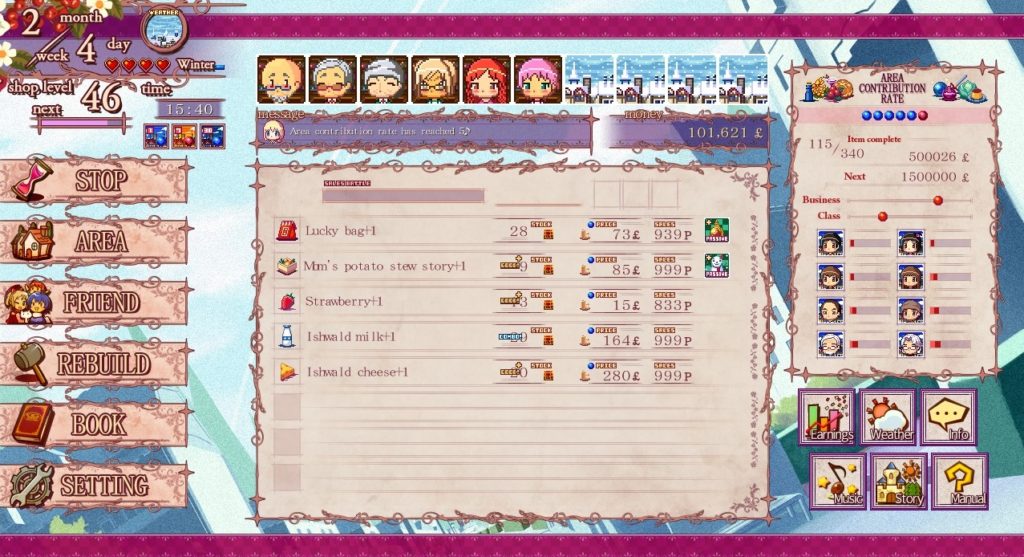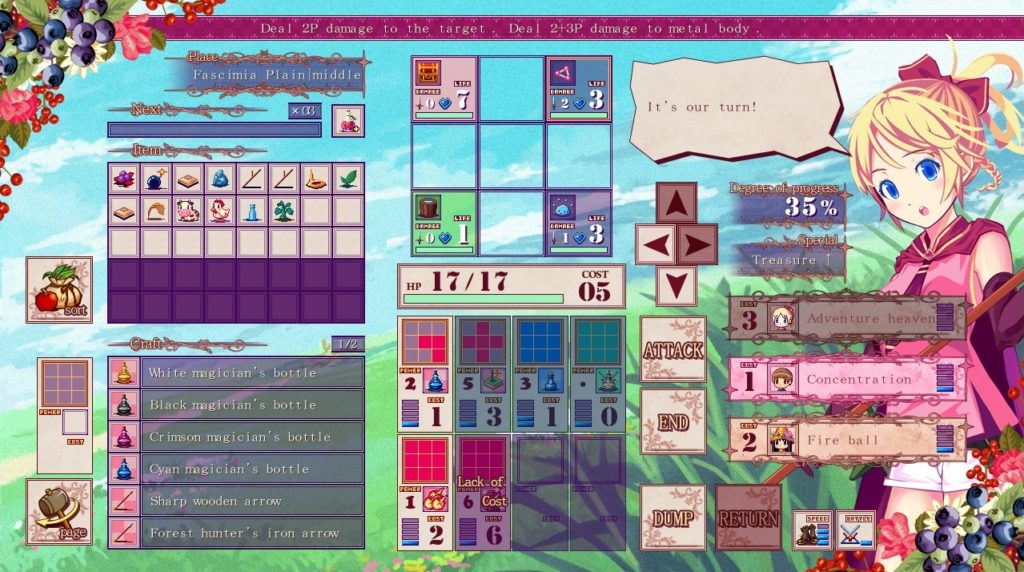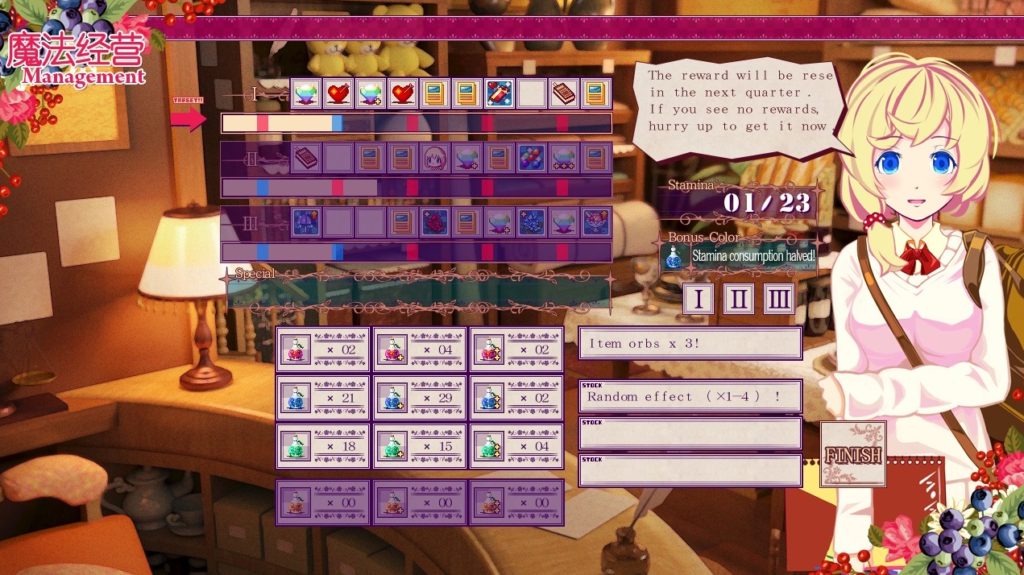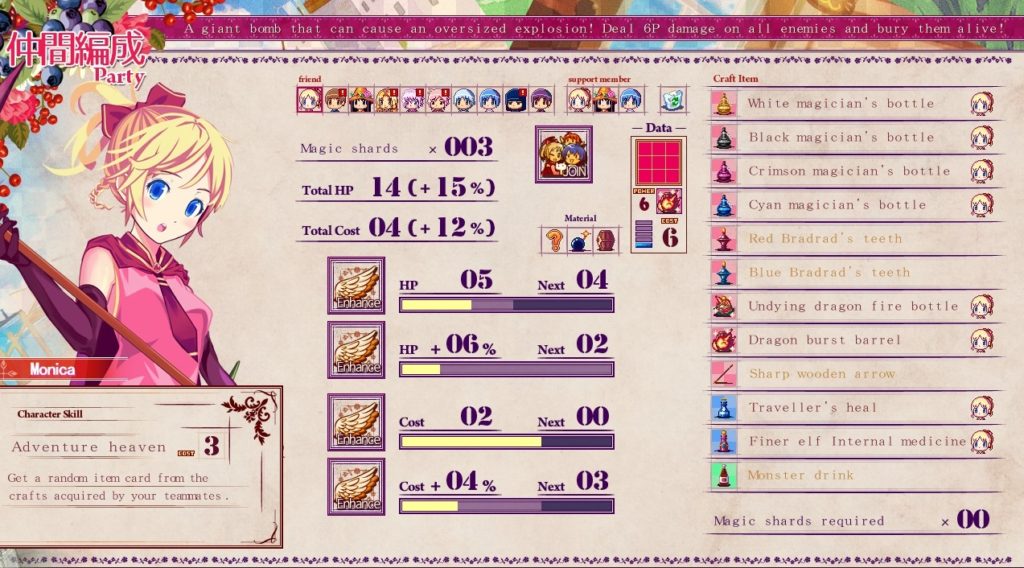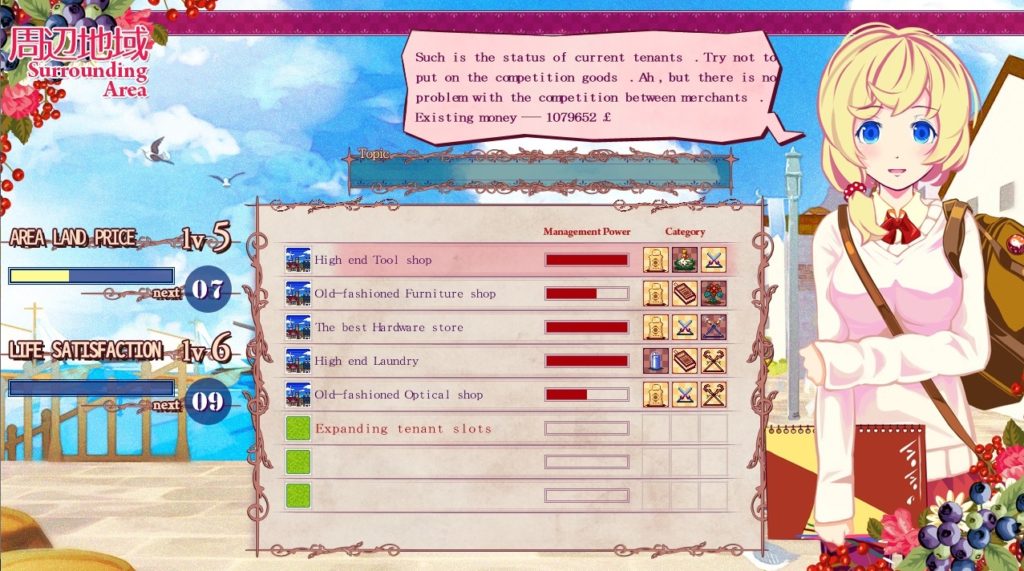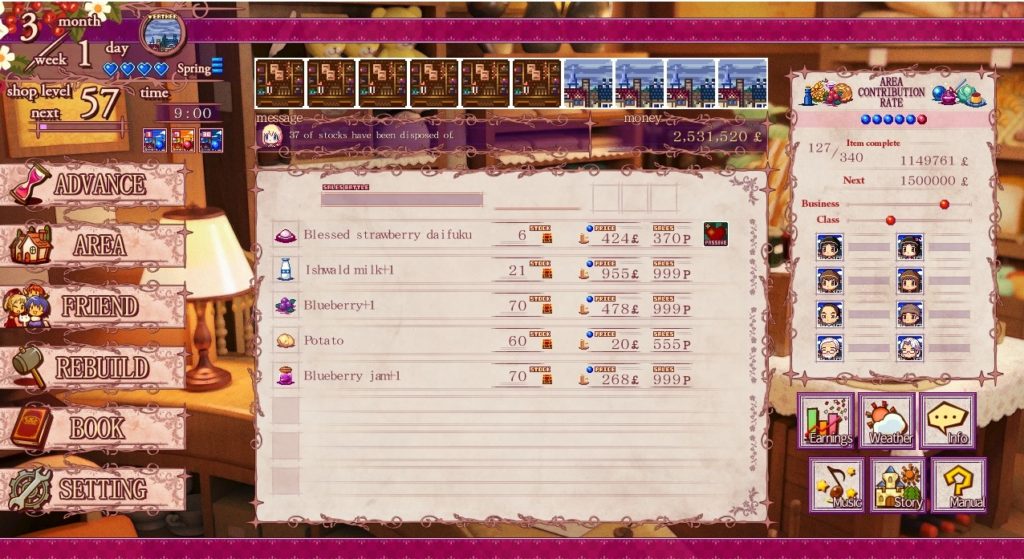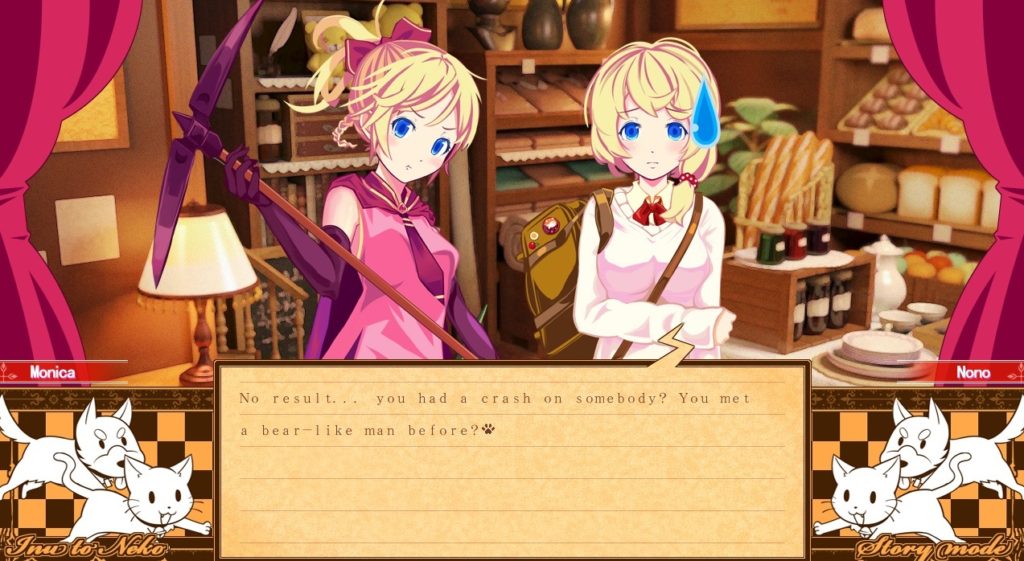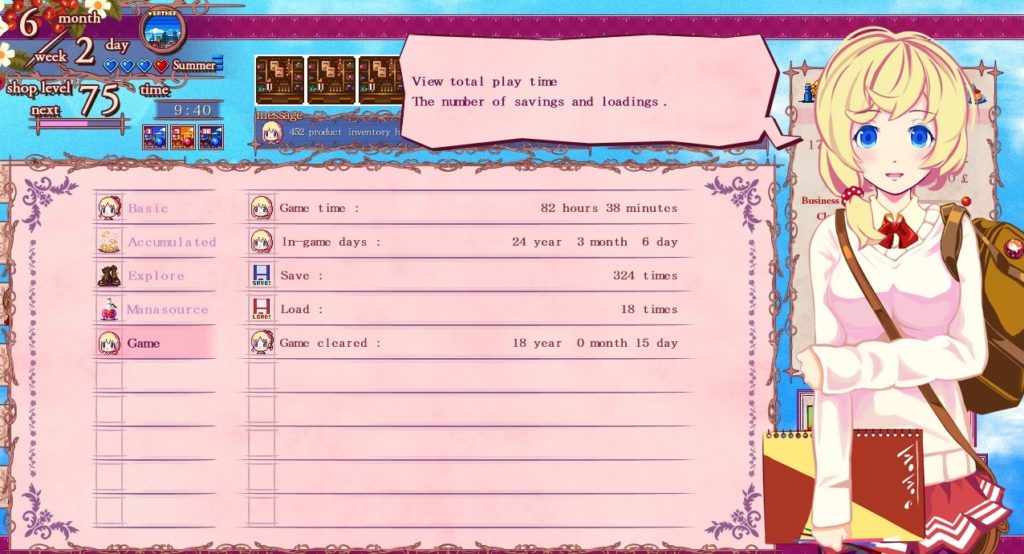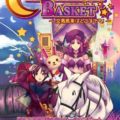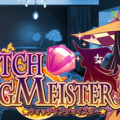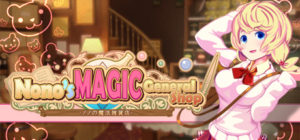 Nono’s Magic General Shop is a shop simulation game from inutoneko, a Japanese indie game maker known for simulation games. I’ve been a fan of theirs since I discovered Lemuore no Renkinjutsushi in 2010, and have made it my mission to try all their games eventually.
Nono’s Magic General Shop is a shop simulation game from inutoneko, a Japanese indie game maker known for simulation games. I’ve been a fan of theirs since I discovered Lemuore no Renkinjutsushi in 2010, and have made it my mission to try all their games eventually.
I had been working through their library at a leisurely pace of one or two games per year, but this year I’ve played four in quick succession: Soul Smith of the Kingdom, Witch Ring Meister, Dungeon Shoujo and now Nono’s Magic General Shop. I put the blame squarely at the feet of Gust and the Atelier series. It used to be that I would play one Atelier game and feel good on the crafting/simulation game front for months, but those days ended with Shallie and then the travesty that was Atelier Sophie. So I have to look for my kicks elsewhere. Thus, here we are.
Story
Nono is the sickly little sister of Monica, the dungeon-crawling main character from Dungeon Shoujo. Tired of staying home all day, Nono decides to get a part-time job at her Grandma’s magic shop. And while they’re at it, they decide to sell lots of goods to make their city more prosperous. And that’s all the story you need in a simulation game.
Gameplay
Buy stuff and sell it at a profit, buy more stuff and sell it again. The Area Contribution Rate in the upper right corner shows the income (profit?) targets you’re supposed to reach. Higher contribution rate = better sales. You can also expand your store, etc. The usual shop game stuff.
Two things make Nono different. The first is the competition system. I’ll be discussing it in more detail under “Problems” below, but basically there are other shops in the neighborhood and if they start selling items in the same category, your sales will drop like a rock. For example, “Vegetables” is a category, so if you sell corn and potatoes and a tenant moves in selling the same things, nobody will buy yours any more. Gotta wonder how predatory Nono’s profit margins are, seeing how easily her store is disrupted by the least bit of competition…
The second difference is “disposal rates.” That means some goods are perishable and a certain percentage of leftover stock will be thrown out at the end of the week. For example if you stock 100 bottles of milk with a 25% disposal rate and you only sell 80 bottles, 25% of the remaining 20 bottles, i.e. 5 bottles, will be lost forever at the end of the week. This encourages you to keep a close eye on your sell-through ratio so you don’t stock too much or too little.
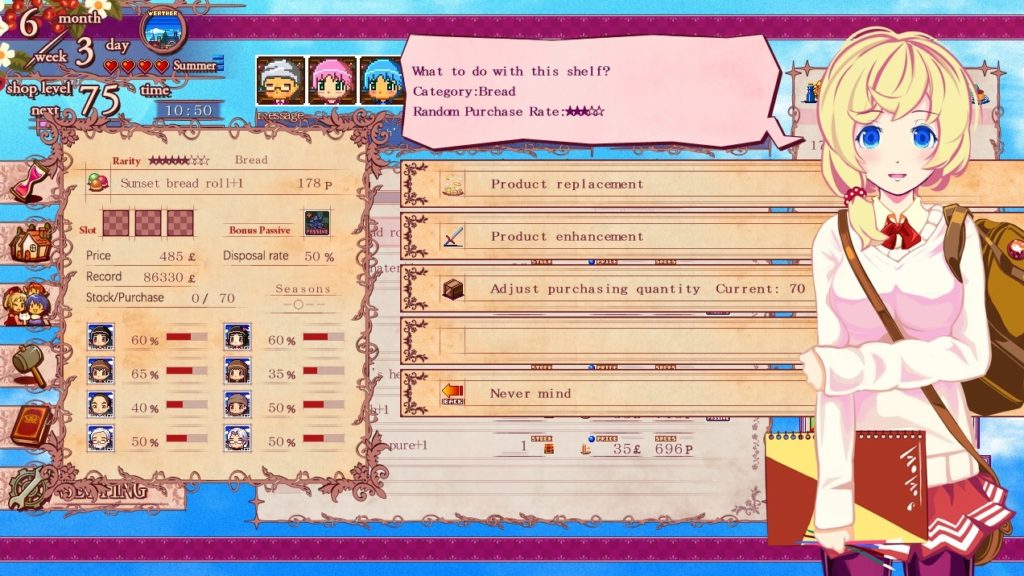 Apart from selling stuff, there’s also an adventuring section like in other inutoneko games. You send adventurers out four times a year during “Management Meetings” and use the items they bring back to upgrade items or unlock new items for sale.
Apart from selling stuff, there’s also an adventuring section like in other inutoneko games. You send adventurers out four times a year during “Management Meetings” and use the items they bring back to upgrade items or unlock new items for sale.
Combat is actually pretty interesting. You have a fixed amount of actions you can take each turn, based on your total “Cost.” Using items and skills all use up “Cost.” It’s like AP in other games with similar systems. So you have to choose attacks and items carefully to get the best cost performance, so to speak. There’s also a strong random component where which enemies and which items drop in each run differ widely, so it’s not unusual to get wiped out if you get super unlucky. Especially since your level resets to 0 after each adventure, like in a roguelike. It wouldn’t be a bad system to have in a proper dungeon crawler game, tbh.
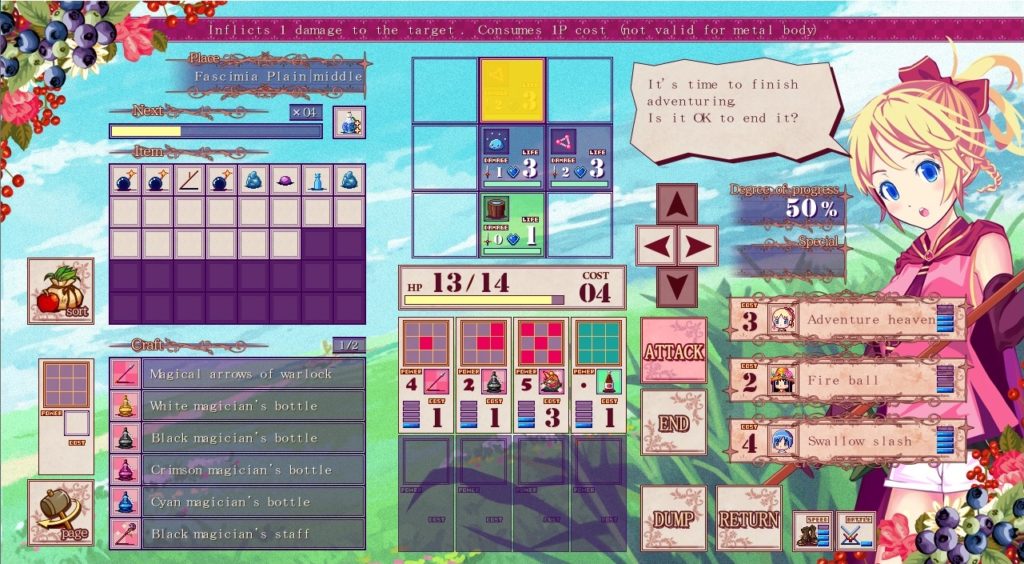 There are other mini-games, such as the “Negotiation” part where you negotiate with the guild to buy new products. I would have taken a screenshot, but it requires all my powers of concentration to pass each game so no can-do. You can also equip useful passives for a small/huge fee and play a very annoying… game? …of chance? to get get useful buffs like extra stamina and mana shards.
There are other mini-games, such as the “Negotiation” part where you negotiate with the guild to buy new products. I would have taken a screenshot, but it requires all my powers of concentration to pass each game so no can-do. You can also equip useful passives for a small/huge fee and play a very annoying… game? …of chance? to get get useful buffs like extra stamina and mana shards.
The …game…? works like this. You use those bottles to fill up the gauges. Each bottle fills the gauge up a little, a medium amount, a lot, but it’s random how much the gauge will go up every time. It’s a bit like Alice in Wonderland having to nibble on the Big and Little mushrooms until she was just the right size. Anyway, if, after a long struggle, you manage to make the gauge land on a red bar, a roulette starts and you eventually get an item that may or may not be useful, rinse and repeat.
Problems
I won’t say I didn’t like Nono’s Magic General Shop at all, but it has a lot of problems that make it inferior to most of the other Ishwald games I’ve played
1. Very little to do
Inutoneko’s other shop games like Kaiyou Resutoran Uminekotei and Ocean Lunch Antique had more to the game than just minding the store. They both had very robust crafting and upgrading systems so you could unlock new items, synthesize new products and learn new recipes all the time.
In Nono your involvement is limited to negotiating for new products, which you then put on the shelf. Then you sit down for 3 months straight (in-game) and watch them sell. Sometimes you pull something off the shelf and replace it if it’s not selling well, or you make a minor enhancement to your items because the major enhancement system is such a time-wasting, expensive chore that I’m not going to bother explaining it.
That’s it. After a while, I would stock the shelves with popular items at the beginning of the season and then leave the game to run itself while I played with my smartphone or tablet or just walked away and came back 10 minutes later. It’s good if you want an idle kind of game, but I prefer the more involved systems of previous games.
2. The manasource system of growth
You need mana shards to boost your adventurers’ stats and unlock new skills. Since their levels reset to 0 every season, this is really important. But the only way to get shards is from the manasource game. Which is random. It’s random whether you’ll successfully land on a roulette spin, it’s hard to control where the roulette stops, and more likely than not you’ll get junk orbs you don’t need instead of mana shards. And you can only play this useless games 4 times a year AND the board resets regularly so you can’t even wipe out the useless orbs first and collect the shards later. Terrible, terrible idea.
Renting stores to tenants is an important feature in Nono’s General Magic Shop. It raises land prices and resident life satisfaction. Happier, wealthier residents buy more expensive goods, which makes more money for you. So having tenants is a good thing… in theory.
In practice, because each tenant is a direct competitor for a certain category of goods, they limit your gameplay options severely. If a tenant moves in selling veggies, fruits and books, that means you can’t sell any of those. Three categories representing dozens of goods, all closed off to you. What’s the point of the game boasting of over 300 items when you’ll never be able to sell a large chunk of them due to competition?
Sure, there’s always the option to run them out of business through a sales battle, but first off, losing even one tenant will tank land prices and satisfaction, reducing sales of your pricier items. Secondly there’s no guarantee the next tenant won’t compete in the same category, or a different but equally important category, unless you save and reload like crazy.
And then there’s the whole mutual competition thing where you want tenants to compete with each other, not with you. Taking one out can disrupt the balance. Plus in the worst-case scenario, you will have to defeat two, three or more tenants just to free up one category so you can sell those items. It’s not worth the hassle. A whole game based on collecting and selling items shouldn’t have so many restrictions on buying and selling.
4. The slow pace of getting new items
Unlocking new items is a pain because first your adventurers have to collect ingredients from a dungeon. Then you have to hope that promising items appear on the list of available items. Sometimes all the items you get are in categories your tenants are competing in, i.e. you’ll have a hard time selling them. Then you have to hope you have enough ingredients. Then you have to play a stupid negotiating game to unlock them. Then you finally put them in the shop. In practice you will probably only unlock 8-12 new items in every in-game year.
Couple that with the fact that the bonuses for selling 100, 500 and 999 of an item are much-reduced compared to past games and you’ll end up selling the same bestselling items year-in year-out for most of the game. So much for 300+ items.
BTW, as a tip to new players, instead of bothering with new items, you can create super-items by selling over 999 of staples like milk and fruit. E.g. The base price for Ishwald milk is around £18, but once you sell 999 of it, the price starts to go up. Right now I’ve sold around 4000 units and the price per bottle is now £955. You can compare the price in the main menu screenshot below with the one way above. Blueberries went from £6 to around £288 and still rising. Why bother unlocking new items when you can do this?
Even better, if the rarity of the base ingredient goes up, all derived products experience a boost in rarity and price as well. Blueberries are rare, so blueberry jam is rare too. And blueberry jam has a 0% disposal rate, so really, you could finish the game by leveling up your fruits and then stocking your store with jam only.
The reason I’m mentioning this here is because the game doesn’t explain it properly apart from a few throwaway comment. The game manual and tutorial are largely useless. For example they don’t explain that you can’t finish the game with just jam, because once prices rise to a certain level, people can’t buy them any more unless you also raise general satisfaction and land prices and upgrade your contribution rate. I had to find that out the hard way, so I’m currently sitting on a ton of expensive milk and jam I can’t sell for now.
5. The translation
It’s not as awful as Soul Smith of the Kingdom, but it still needs a solid round of editing by a native English speaker. It doesn’t even need to be a professional editor, just someone who can recognize blatant errors like this one:
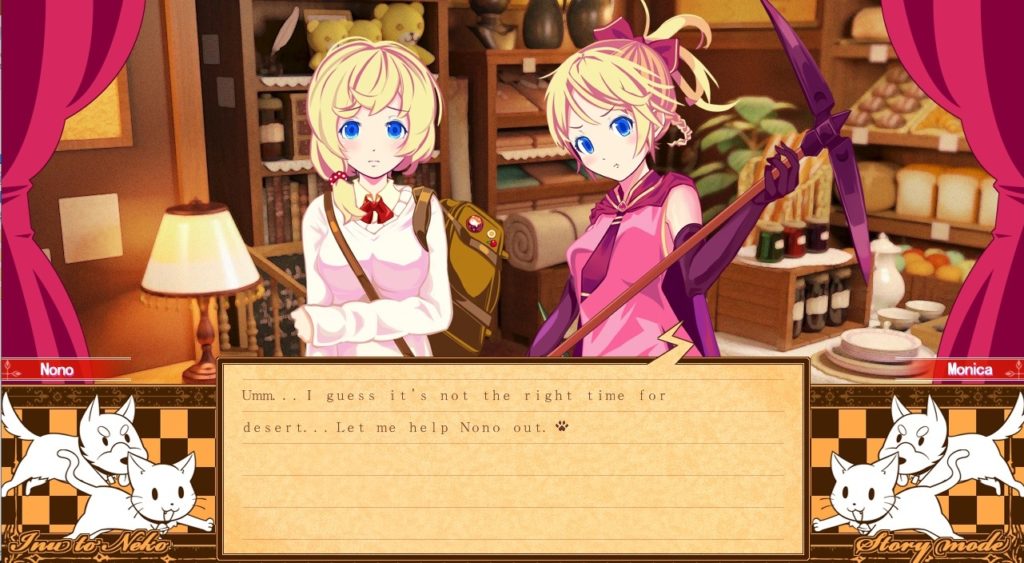 Among many others. Starship Studio still has a long way to go.
Among many others. Starship Studio still has a long way to go.
Summary
Nono’s Magic General Shop has kept me entertained for 80+ hours so far, so I won’t trash it too badly. But there are better games out there if you want a shop simulation fix, even in the same Ishwald series.
The frustrations are too many and there isn’t much to do most of the time. Play it if you’re an inutoneko fan, if you want an idle clicker kind of game, or if you have nothing better to do. Otherwise save your time and money for something more rewarding.
